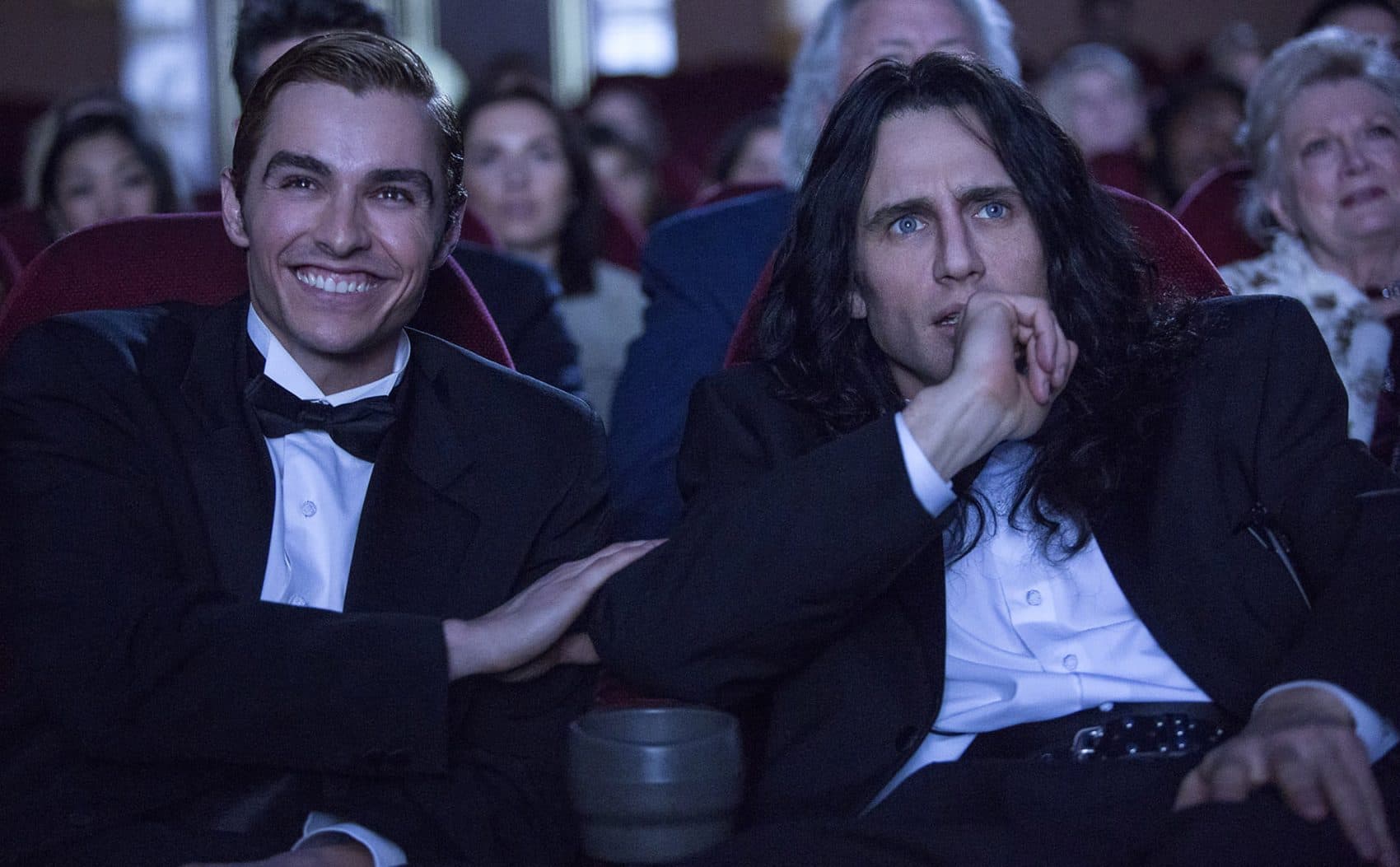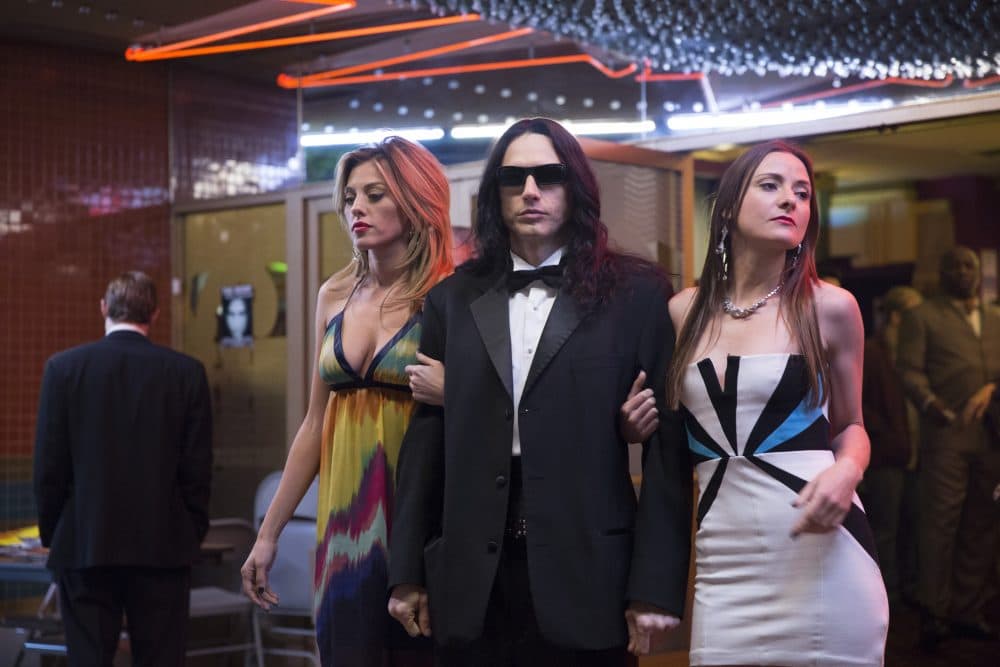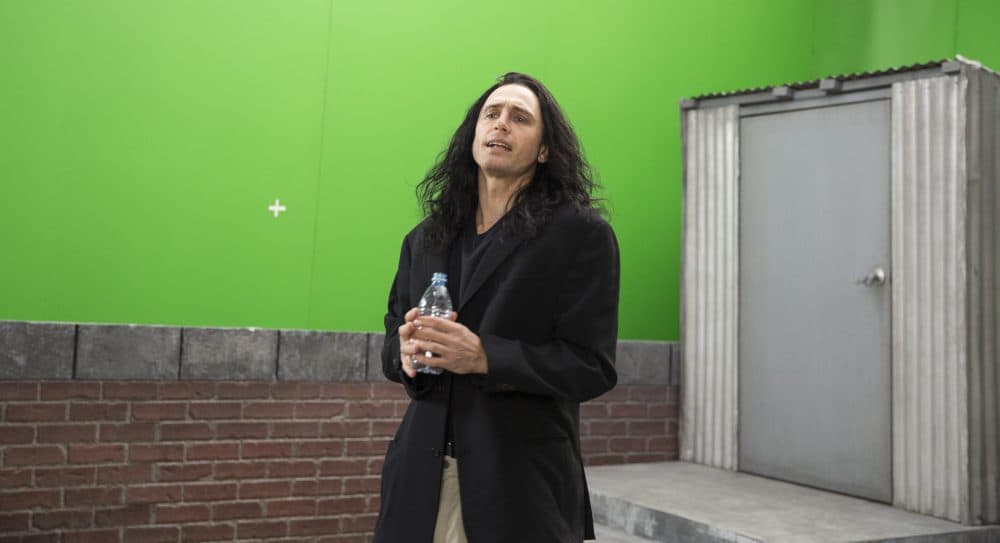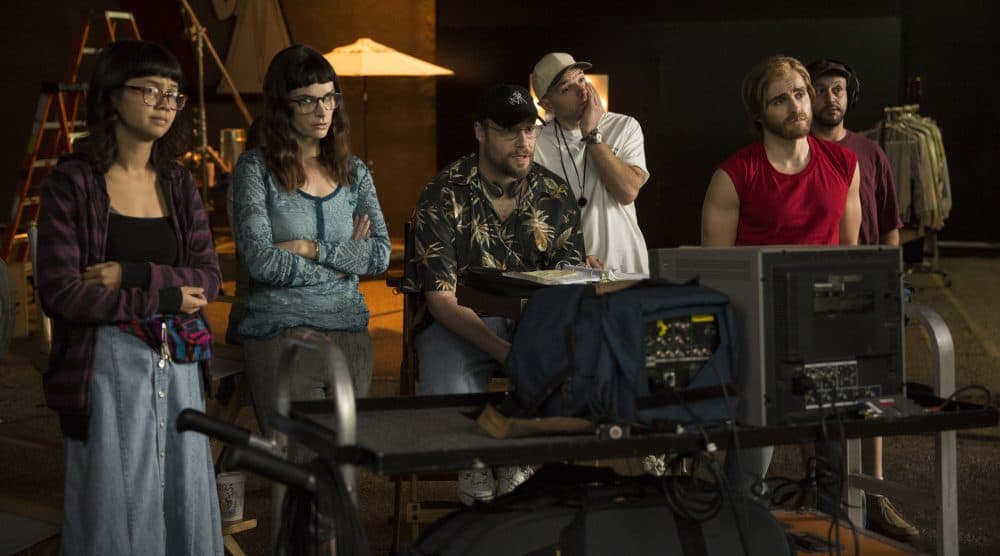Advertisement
Review
In 'The Disaster Artist,' James Franco Explores Makings Of Cult Classic 'The Room'

Who would want to make a movie about the making of the worst movie ever made? Of course James Franco would.
Whether re-creating the lost hardcore S&M footage from “Cruising” in 2013’s “Interior. Leather Bar.” or showing up just to get killed during the opening credits of this past summer’s “Alien: Covenant,” most of Franco's career decisions feel like dares. I can’t imagine his agent has an easy time of things.
After all, the last time Franco teamed up with his “Freaks and Geeks” pal Seth Rogen for a Christmastime comedy, the two caused such an international incident that major theater chains refused to show “The Interview.” By that standard (and maybe only by that standard), I guess “The Disaster Artist” — a surprisingly sunny film Franco directed about Tommy Wiseau’s bizarre cult fetish item “The Room” — seems like a comparatively safe bet.
Perhaps a bit of background is in order. In 2009, a couple of film school instructors I used to drink with dragged me to the Coolidge Corner Theatre for a late show of a movie they claimed defied description. Written and directed by its deeply strange star, Tommy Wiseau, “The Room” is a floridly melodramatic tale of lust and infidelity brought to the screen in such fumbling fashion that the word “amateurish” feels woefully inadequate.

It’s as if the movie were made by aliens unconvincingly attempting to replicate human behavior they’d read about in books, but never actually observed. The stilted dialogue is so full of non sequiturs it sounds as if it’s been mistranslated from another language, and the actors deliver it as they indulge in odd bits of business like tossing a football back and forth while standing three feet apart.
Everything in “The Room” is about 45 degrees “off” from recognizable reality — whether we’re talking about peculiar editing patterns that prompt characters to appear out of nowhere and then vanish into thin air, or the 11 minutes of explicit sex scenes that don’t quite line up anatomically. “The Room” is so uncanny in its ineptitude that watching it becomes a hallucinatory experience — one that’s replaced “The Rocky Horror Picture Show” on the midnight movie circuit and after eight years is still selling out monthly screenings at the Coolidge.
Yet what’s always struck me is the emotional rawness that somehow shines through Wiseau’s hilarious incompetence. In the canon of legendarily bad films, “The Room” has much in common with Ed Wood’s “Glen or Glenda” in that we’re seeing a filmmaker struggling with intense emotions he lacks the artistry to express.

Someone hurt this guy, badly — and the movie is both an infantile temper tantrum and an act of revenge. It even ends with all the characters who have wronged our protagonist coming to their senses and apologizing, but not until after he’s shot himself in the face. Wiseau is a mysterious, sad man whose naked cry of heartbreak has become an unintentional comedy classic for millions of viewers. Now he’s laughing along with us, all the way to the bank.
Loosely based on a significantly darker memoir of the same name by Greg Sestero, “The Room” co-star and line producer, Franco’s very funny film is content to skate along the surface of the story and present his oddball hero as an underdog dreamer who beats the odds and becomes a Hollywood legend, though maybe not exactly in the way he’d originally hoped.
The movie lives and dies on Franco’s awe-inspiring performance as Wiseau, which goes beyond mere mimicry and into the realm of eerie embodiment. He’s got Wiseau’s stringy dyed-black hair and buffed-up physique, mangling his syntax and dropping random words in that obviously Eastern European accent that he insists is “from New Orleans.” But Franco also brings to the role a side-splitting, glorious bravado, insisting that the world works according to his whims despite all visible evidence to the contrary.
Wiseau latches onto naïve, aspiring young actor Sestero (gamely played by Franco’s younger brother Dave) and the two soon get fed up with Hollywood’s rejections and decide to make their own movie. Rogen shows up as the long-suffering script supervisor and audience surrogate who can’t believe what these clowns are filming, and the rest of the supporting roles are rounded out by so many stalwarts of the Los Angeles comedy scene that I assume having a podcast was a prerequisite for auditions.

It’s a very entertaining film, borrowing bits of “Bowfinger” and of course “Ed Wood” while putting a happy face on our misfit moviemakers and their oversized dreams. But what “The Disaster Artist” doesn’t do is probe the darkness that’s bubbling underneath all the bungling of “The Room.”
Franco never questions the virulent misogyny that’s made the film a favorite with frat boy audiences who go to the Coolidge and yell “bitch” at the screen, and he avoids all the uglier episodes in Sestero’s book. The movie meticulously re-creates the most famously botched scenes from “The Room,” but shies away from its tortured soul.
“The Disaster Artist” opens Friday, Dec. 1. “The Room” returns to the Coolidge Corner Theatre on Friday, Dec. 15. Greg Sestero will be there reading from and signing his memoir on Saturday, Dec. 16.
